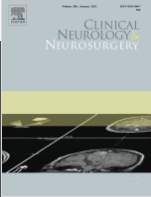POLG-associated ataxias can represent a substantial part of recessive and sporadic ataxias in adults

Evgenii Nuzhnyia, Yury Seliverstov, Sergey Klyushnikov, Tatiana Krylova, Polina Tsygankova, Igor Bychkov, Ekaterina Zakharova, Rodion Konovalov, Pavel Fedin, Natalia Abramycheva, Sergey Illarioshkin
Clinical Neurology and Neurosurgery, Volume 201, February 2021, 106462
Objective
We aimed to analyze prevalence, clinical, and genetic characteristics of the POLG-associated ataxias in a cohort of recessive and sporadic ataxias in adults with previously excluded acquired ataxias.
Methods
We did a retrospective analysis of the medical records of 74 patients older than 18 years referred to the Research Center of Neurology between 2012 and 2019 with progressive sporadic or autosomal recessive ataxia with onset before 50 years of age. A stepwise approach in genetic testing was used. All patients with genetically confirmed POLG-associated disorders underwent clinical, biochemical, electrophysiological, and neuroimaging assessments.
Results
In our cohort of 74 adult patients with autosomal recessive and sporadic ataxias, POLG-related disease was identified in 11 individuals (14.9 %). The median age of onset was 30 years. One patient had a positive family history. The core clinical syndrome included external ophthalmoparesis, cerebellar signs, and sensory neuropathy. In all patients, the Montreal Cognitive Assessment score was less than 26. All but 3 patients had specific brain MRI changes. Mutation spectrum of the POLG gene in our cohort is discussed.
Conclusion
Our study shows that POLG-associated ataxias comprise a significant part of the recessive and sporadic ataxias in adults in the Russian population after excluding acquired causes of ataxic disorders. We suggest first screening patients with specific clinical and (or) neuroimaging features for the population-specific common POLG mutations, followed by the NGS panel testing where necessary. In future clinical studies, thorough cognitive and neuropsychiatric profiling is needed to complete the phenotype of the POLG-related disorders.
https://www.sciencedirect.com/science/article/abs/pii/S0303846720308052?fbclid=IwAR26NHiZXtLniVLtp4txF_xh9AcW6cHEBqpOQbFpSfsgVLg5sY90feGvM2A